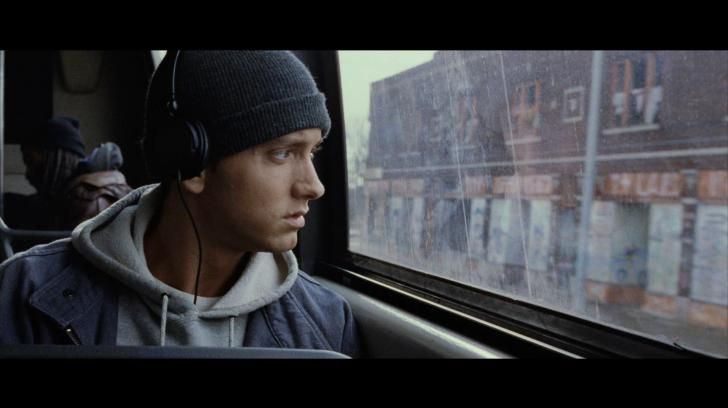Diversity in music industry draws mixed opinions among ISU students
Jimmy “B-Rabbit” Smith (Played by Eminem) rides the bus in “8 Mile,” (2002) a semi-biographical drama based off of rapper Eminem’s early life.
March 31, 2016
Near the end of the semi-biographical drama “8 Mile,” Jimmy “B-Rabbit” Smith — portrayed by American rapper and subject material, Eminem — is engaged in a rap battle and ends his verse saying he is going to “turn around with a great smile and walk … back across 8 mile.”
The film’s title is derived from the stretch of highway that divides the predominantly black neighborhoods of Detroit and the primarily white suburbs, which Smith symbolically finds himself between as he attempts to break into the dominantly black hip-hop music scene.
While “8 Mile” mainly focuses on the state of hip-hop and rap music, the film also depicts a certain state of the music industry and modern society in general: they are both seen in black and white.
With racial injustice is a hot topic in today’s news cycle, it’s easy to forget that the music world is not viewed in monochrome.
“I believe that [Asian artists] aren’t represented well in American culture because their music isn’t in English,” said Matt Jacoby, junior in mechanical engineering. “Good or bad, it’s usually out of the American culture but extremely popular among Asians.”
When looking at the Billboard Hot 100, the U.S. music industry’s standard record chart, you might be hard-pressed to find much representation of Asian artists, as the Hot 100 is typically dominated by Caucasian and African-American artists.
Only one Asian-American artist has charted a track at the top of the Hot 100, Far East Movement, and the duo’s “Like a G6” reached the top of the chart in 2010 for three non-consecutive weeks. (What about Gangnam Style?)
While Asian-American artists are typically underrepresented in the music industry, they certainly aren’t the only culture affected.
“Indian culture is very stereotyped in the American music industry,” said Yashasvi Manektala, junior in kinesiology and health. “Artists might use some Indian music as a background in some of their songs, but the music used is typically Bollywood music. In India, we have separate rock and pop artists [and] if people recognized that, Indian culture could be more accurately portrayed.”
Some people find the lack of diversity in the mainstream music scene to be somewhat unnerving, but others believe there are reasons that certain artists and songs become as popular as they do.
“American culture within the music industry [is] warranted because our own culture is the most prevalent,” said Aaron Hudson, sophomore in computer engineering. “You’ll see more of the local culture in that local music industry because that’s what they know best.”
American culture is undeniably a huge factor in what the public is listening to. Artists from outside of the United States might have trouble finding appeal to the trends, language and sound, as they do not reside in the country and therefore lack firsthand knowledge of happenings within it.
Despite all of the emphasis on U.S. trends, some of the industry’s biggest stars have come from outside the border. Popular artists Drake, The Weeknd and Justin Bieber all hail from Canada, while Adele and Coldplay both got started in London.
This is not to say that some of the industry’s most popular acts do not start close to home, as Taylor Swift and Ariana Grande both originate from the United States.
Externally, diversity in the music industry might not be that easy to pinpoint, but some music fans believe music is all about the product and not necessarily the face that is put on it.
“I think [diversity] is already represented well, seeing as we have so many genres that have different people involved,” Hudson said.







